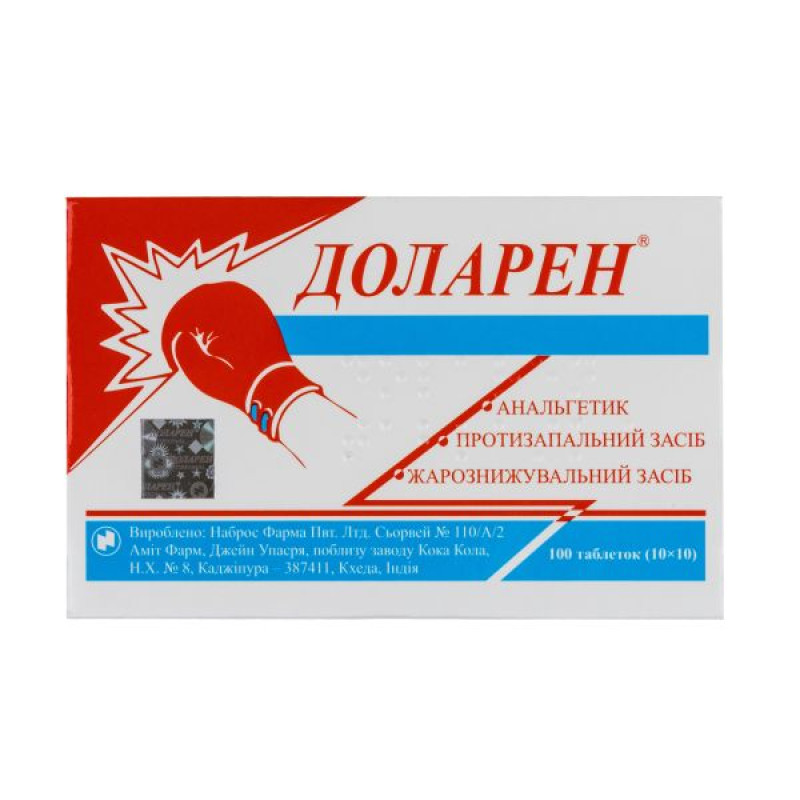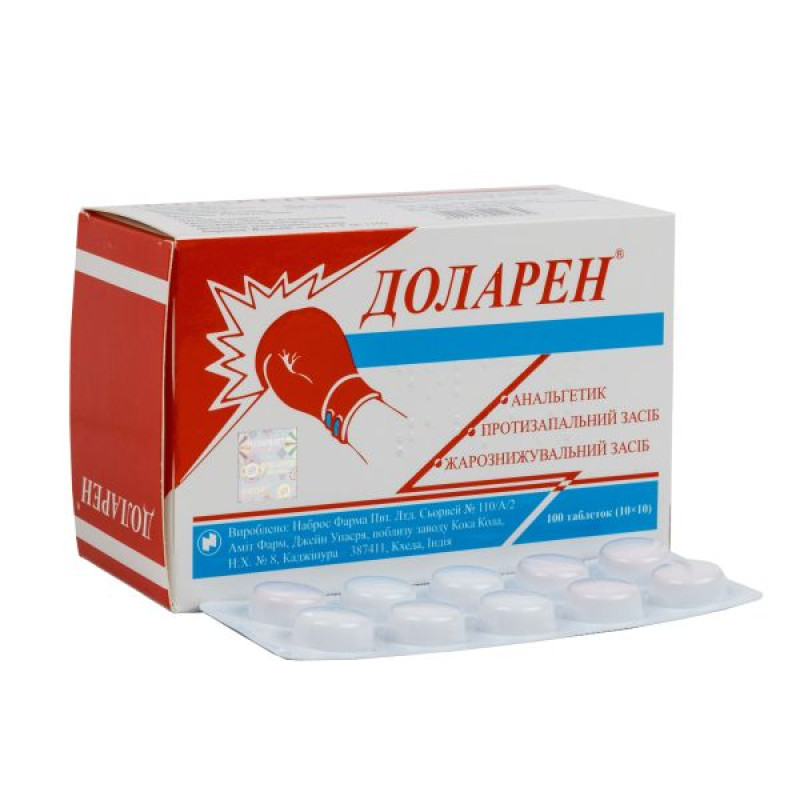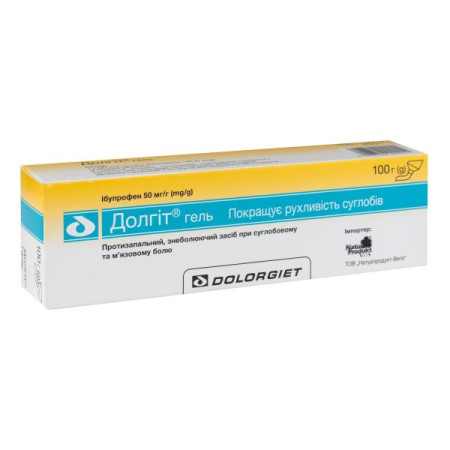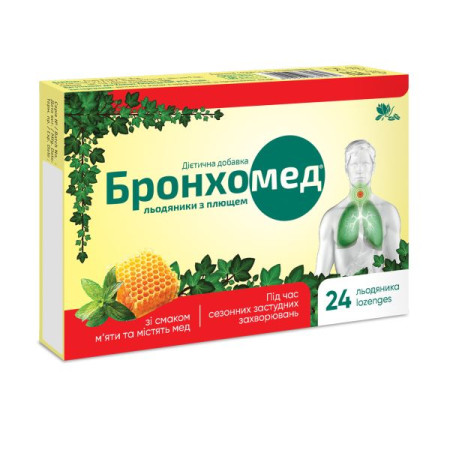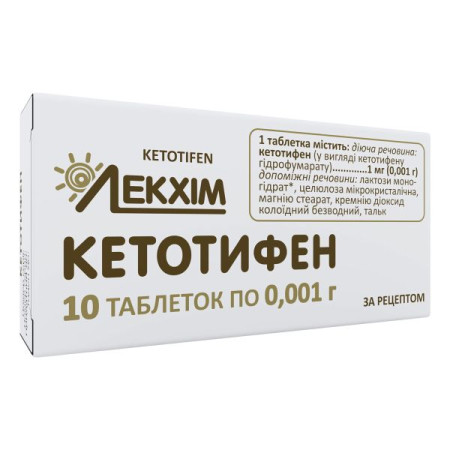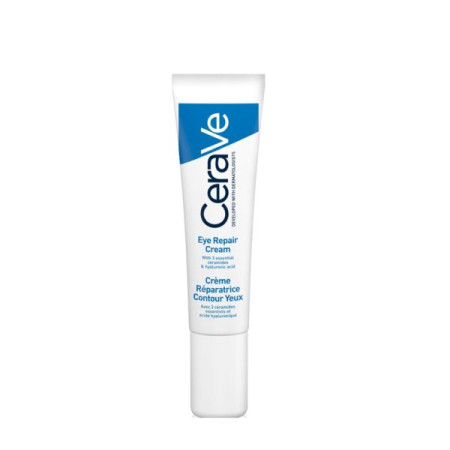Dolaren tablets No. 100
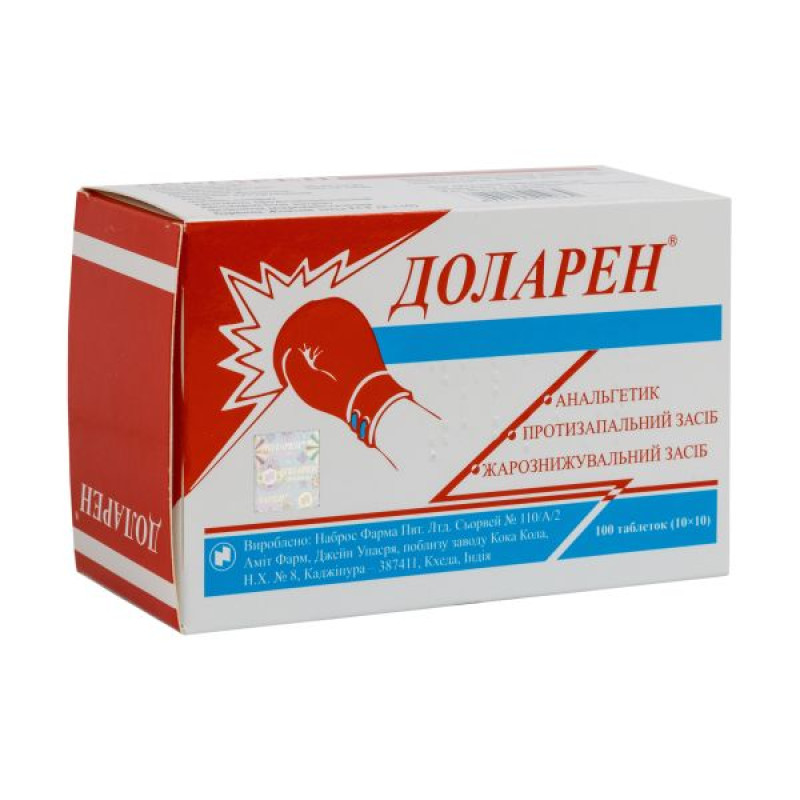
Instructions for Dolaren tablets No. 100
Composition
active ingredients: diclofenac sodium, paracetamol;
1 tablet contains diclofenac sodium 50 mg, paracetamol 500 mg;
excipients: corn starch, talc, magnesium stearate, microcrystalline cellulose, pregelatinized starch, croscarmellose sodium, Sunset Yellow FCF dye (E 110).
Dosage form
Pills.
Main physicochemical properties: round biconvex, two-layer, two-color (white on one side, orange on the other) tablets. White and/or dark orange inclusions are allowed on the surface of the tablets.
Pharmacotherapeutic group
Analgesics and antipyretics. Paracetamol, combinations without psycholeptics.
ATX code N02B E51.
Pharmacological properties
Pharmacodynamics.
Dolaren® is a combined drug that has a pronounced anti-inflammatory, analgesic and antipyretic effect. The pharmacological activity of the drug is due to the properties of diclofenac and paracetamol, which are part of the drug.
Diclofenac sodium has a pronounced anti-inflammatory and analgesic, as well as a moderate antipyretic effect. Paracetamol exhibits a pronounced analgesic, minor antipyretic and anti-inflammatory effect. The mechanism of action is associated with inhibition of prostaglandin synthesis.
Pharmacokinetics.
After oral administration, the drug is rapidly and completely absorbed. Food does not affect the absorption of the drug.
The concentrations of active substances in blood plasma have a linear dependence on the dose of the drug, with maximum levels reached 60–90 minutes after administration.
The binding of diclofenac to serum proteins (mainly albumin) reaches 99.7%. The expected volume of distribution is 0.12–0.17 l/kg. Diclofenac penetrates into the synovial fluid, where its maximum concentration is reached 2–4 hours later than in blood plasma. The half-life from the synovial fluid is 3–6 hours.
The metabolism of diclofenac is carried out by glucuronidation of the unchanged molecule and methoxylation, which leads to the formation of several phenolic metabolites, the biological activity of which is significantly inferior to the activity of the initial substance. The total systemic plasma clearance of diclofenac is approximately 300 ml/min. The terminal half-life is 1–2 hours. 60% of the administered dose is excreted in the urine as glucuronide conjugates of unchanged diclofenac, the rest in the bile and feces.
Paracetamol is metabolized in the liver and excreted mainly in the urine.
After repeated use of the drug, the pharmacokinetic parameters of the active substances do not change. Provided that the recommended intervals between taking the tablets are observed, cumulation of the drug is not observed.
Indication
– Acute pain (muscular, headache, dental, localized in the spine), in non-articular rheumatism, rheumatoid arthritis, ankylosing spondylitis, osteoarthritis, spondyloarthritis, acute attacks of gout, primary dysmenorrhea, adnexitis, pharyngotonsillitis, otitis.
– Post-traumatic and postoperative pain syndrome.
Contraindication
- Hypersensitivity to diclofenac, paracetamol or any other component of the drug.
- Active ulcer/bleeding or history of recurrent ulcer/bleeding (two or more separate episodes of established ulceration or bleeding).
- Liver failure.
- Renal failure.
- Congestive heart failure (NYHA II-IV)
- Ischemic heart disease in patients with angina pectoris who have had a myocardial infarction.
- Patients in whom the use of diclofenac, paracetamol, acetylsalicylic acid or other non-steroidal anti-inflammatory drugs (NSAIDs) provokes attacks of bronchial asthma, angioedema, urticaria or acute rhinitis.
- Blood diseases, severe anemia, leukopenia.
- Congenital hyperbilirubinemia.
- Glucose-6-phosphate dehydrogenase deficiency.
- History of gastrointestinal bleeding or perforation associated with previous treatment with nonsteroidal anti-inflammatory drugs (NSAIDs).
- Inflammatory bowel disease (Crohn's disease or ulcerative colitis).
- Alcoholism.
- Treatment of perioperative pain during coronary artery bypass grafting (or the use of a cardiopulmonary bypass machine).
- Peripheral artery disease.
- Cerebrovascular disease in patients who have had a stroke or have episodes of transient ischemic attacks.
- High risk of developing postoperative bleeding, blood clotting disorders, hemostasis disorders, hematopoietic disorders, or cerebrovascular bleeding.
Interaction with other medicinal products and other types of interactions
Diclofenac.
Lithium: Diclofenac may increase plasma lithium concentrations when used concomitantly. Monitoring of serum lithium levels is recommended.
Diuretics and antihypertensives. As with other NSAIDs, concomitant use of diclofenac with diuretics and antihypertensives (e.g. beta-blockers, angiotensin-converting enzyme (ACE) inhibitors) may lead to a reduction in their antihypertensive effect due to inhibition of the synthesis of vasodilator prostaglandins. Therefore, such a combination should be used with caution and patients, especially the elderly, should be closely monitored for blood pressure. Patients should be adequately hydrated and monitoring of renal function is recommended after initiation of concomitant therapy and regularly thereafter, especially with diuretics and ACE inhibitors, due to the increased risk of nephrotoxicity.
Drugs known to cause hyperkalemia: Concomitant treatment with potassium-sparing diuretics, cyclosporine, tacrolimus, or trimethoprim may be associated with increases in serum potassium levels, and patients should be monitored more frequently.
Anticoagulants and antithrombotic agents: Caution is advised as concomitant administration may increase the risk of bleeding. Although clinical studies have not shown an effect of diclofenac on the activity of anticoagulants, there is some evidence of an increased risk of bleeding in patients receiving diclofenac and anticoagulants concomitantly.
Therefore, close monitoring of these patients is recommended to ensure that no changes in anticoagulant dosage are necessary. Like other NSAIDs, diclofenac in high doses may temporarily inhibit platelet aggregation.
Other NSAIDs, including selective cyclooxygenase-2 inhibitors, and corticosteroids. Concomitant administration of diclofenac and other systemic NSAIDs or corticosteroids may increase the risk of gastrointestinal bleeding or ulceration. The concomitant use of two or more NSAIDs should be avoided.
Selective serotonin reuptake inhibitors (SSRIs): Concomitant administration of systemic NSAIDs and SSRIs may increase the risk of gastrointestinal bleeding.
Antidiabetic agents. Clinical studies have shown that diclofenac can be used together with oral antidiabetic agents without affecting their clinical effect. However, isolated cases of both hypoglycemic and hyperglycemic effects have been reported, requiring a change in the dosage of antidiabetic agents during treatment with diclofenac. In such cases, monitoring of blood glucose levels is necessary as a precautionary measure during concomitant therapy.
Methotrexate. Diclofenac may inhibit the renal tubular clearance of methotrexate, leading to increased methotrexate levels. Caution is advised when NSAIDs, including diclofenac, are administered less than 24 hours before methotrexate treatment, as this may increase the blood concentration of methotrexate and increase its toxicity. Serious toxicity has been reported when methotrexate and NSAIDs, including diclofenac, were administered within 24 hours of each other. This interaction is mediated by accumulation of methotrexate as a result of impaired renal excretion in the presence of NSAIDs.
Cyclosporine: Diclofenac, like other NSAIDs, may increase the nephrotoxicity of cyclosporine through its effects on renal prostaglandins. Therefore, it should be used at lower doses than in patients not receiving cyclosporine.
Tacrolimus: There is a possible increased risk of nephrotoxicity when NSAIDs are used with tacrolimus, which may be mediated through the renal antiprostaglandin effects of the NSAID and the calcineurin inhibitor.
Quinoline antibacterials. There are isolated reports of seizures that may result from the concomitant use of quinolones and NSAIDs. This may occur in patients with or without a history of epilepsy or seizures. Therefore, caution should be exercised when considering the use of quinolones in patients already receiving NSAIDs.
Phenytoin: When phenytoin is used concomitantly with diclofenac, monitoring of phenytoin plasma concentrations is recommended due to the expected increase in phenytoin exposure.
Colestipol and cholestyramine. These drugs may delay or reduce the absorption of diclofenac. Therefore, it is recommended that diclofenac be administered at least 1 hour before or 4–6 hours after colestipol/cholestyramine.
Cardiac glycosides. Concomitant use of cardiac glycosides and NSAIDs may exacerbate heart failure, reduce glomerular filtration rate, and increase plasma glycoside levels.
Mifepristone: NSAIDs should not be used for 8–12 days after mifepristone administration, as NSAIDs may reduce its effect.
Potent CYP2C9 inhibitors: Caution is advised when co-administering diclofenac with potent CYP2C9 inhibitors (e.g. voriconazole), which may lead to a significant increase in maximum plasma concentrations and exposure to diclofenac due to inhibition of its metabolism.
The rate of absorption of paracetamol may be increased by metoclopramide and domperidone and decreased by cholestyramine. The anticoagulant effect of warfarin and other coumarins may be enhanced by long-term regular daily use of paracetamol, with an increased risk of bleeding. Intermittent use has no significant effect.
Barbiturates reduce the antipyretic effect of paracetamol.
Anticonvulsants (including phenytoin, barbiturates, carbamazepine), which stimulate the activity of liver microsomal enzymes, may enhance the toxic effect of paracetamol on the liver due to an increase in the degree of conversion of the drug to hepatotoxic metabolites. With the simultaneous use of paracetamol with hepatotoxic agents, the toxic effect of drugs on the liver increases.
Concomitant use of high doses of paracetamol with isoniazid increases the risk of hepatotoxic syndrome. Paracetamol reduces the effectiveness of diuretics.
Do not use simultaneously with alcohol.
Application features
General
Undesirable effects can be minimized by using the lowest effective dose for the shortest duration necessary to control symptoms.
The use of Dolaren® with systemic NSAIDs, including selective cyclooxygenase-2 inhibitors, should be avoided due to the lack of any synergistic benefit and the possibility of additional side effects.
Caution should be exercised when prescribing the drug to elderly patients. In particular, for elderly patients with frail health and for patients with low body mass index, the lowest effective dose is recommended.
As with other NSAIDs, allergic reactions, including anaphylactic/anaphylactoid reactions, may also occur without prior exposure to diclofenac.
Like other NSAIDs, Dolaren®, due to its pharmacodynamic properties, may mask the signs and symptoms of infection.
Effects on the digestive system
Gastrointestinal bleeding (hemorrhage, melena), ulceration or perforation, which can be fatal, have been reported with all NSAIDs, including diclofenac, and can occur at any time during treatment, with or without warning symptoms, or with a history of serious gastrointestinal events. These events are usually more severe in the elderly. If gastrointestinal bleeding or ulceration occurs in patients receiving diclofenac, the drug should be discontinued.
As with all NSAIDs, including diclofenac, close medical supervision is necessary; particular caution should be exercised when prescribing diclofenac to patients with symptoms suggestive of gastrointestinal disorders, or with a history of gastric or intestinal ulcer, bleeding or perforation. The risk of gastrointestinal bleeding, ulceration or perforation is higher with increasing doses of NSAIDs, including diclofenac, and in patients with a history of ulcer, especially if complicated by bleeding or perforation.
Elderly patients have an increased frequency of adverse reactions when using NSAIDs, especially gastrointestinal bleeding and perforation, which can be fatal.
To reduce the risk of gastrointestinal toxicity in patients with a history of ulcer, especially those complicated by bleeding or perforation, and in elderly patients, treatment should be initiated and maintained at the lowest effective dose.
For such patients, as well as patients who require concomitant use of medicinal products containing low doses of acetylsalicylic acid (ASA) or other medicinal products that are likely to increase the risk of adverse effects on the digestive system, combination therapy with protective medicinal products (e.g. proton pump inhibitors or misoprostol) should be considered.
Patients with a history of gastrointestinal toxicity, especially the elderly, should report any unusual abdominal symptoms (especially gastrointestinal bleeding). Caution is also required in patients receiving concomitant medications that may increase the risk of ulceration or bleeding, such as systemic corticosteroids, anticoagulants (e.g. warfarin), antithrombotic agents (e.g. acetylsalicylic acid), or selective serotonin reuptake inhibitors.
Effect on the liver
Careful medical supervision is required if Dolaren® is prescribed to patients with impaired liver function, as their condition may worsen.
As with other NSAIDs, including diclofenac, elevations of one or more liver enzymes may occur. During long-term treatment with Dolaren®, regular monitoring of liver function should be performed as a precautionary measure.
If liver function abnormalities persist or worsen, if clinical signs or symptoms may be associated with progressive liver disease, or if other manifestations are observed (e.g. eosinophilia, rash), Dolaren® should be discontinued.
Caution is necessary if Dolaren® is used in patients with hepatic porphyria, due to the possibility of provoking an attack.
Effects on the kidneys
Since fluid retention and oedema have been reported with NSAIDs, including diclofenac, special care should be taken in patients with impaired cardiac or renal function, a history of hypertension, the elderly, patients receiving concomitant therapy with diuretics or drugs that significantly affect renal function, and patients with significant depletion of extracellular fluid volume from any cause, such as before or after major surgery. In such cases, monitoring of renal function is recommended as a precautionary measure. Discontinuation of therapy usually results in a return to pre-treatment status.
Effects on the skin
Serious skin reactions (some of which were fatal) have been reported very rarely in association with the use of NSAIDs, including Dolaren®, including exfoliative dermatitis, Stevens-Johnson syndrome and toxic epidermal necrolysis. The highest risk of these reactions is evident at the beginning of therapy, in most cases within the first month of treatment. Dolaren® should be discontinued at the first appearance of skin rash, mucosal lesions or any other sign of hypersensitivity.
Systemic lupus erythematosus (SLE) and mixed connective tissue diseases
Patients with SLE and mixed connective tissue diseases may be at increased risk of developing aseptic meningitis.
Cardiovascular and cerebrovascular effects
Diclofenac should only be prescribed to patients with significant risk factors for cardiovascular events (e.g. hypertension, hyperlipidemia, diabetes mellitus, smoking) after careful clinical evaluation. Since the cardiovascular risks of diclofenac may increase with increasing dose and duration of treatment, it should be used for the shortest possible period and at the lowest effective dose. The patient's need for diclofenac should be periodically reviewed for symptom relief and response to therapy. Use with caution in patients over 65 years of age.
For patients with a history of hypertension and/or mild to moderate congestive heart failure, appropriate monitoring and advice is necessary, as fluid retention and oedema have been reported in association with the use of NSAIDs, including diclofenac.
Clinical trial data and epidemiological data suggest that the use of diclofenac, especially at high doses (150 mg/day) and for long periods, may be associated with a small increased risk of arterial thrombotic events (e.g. myocardial infarction or stroke).
Diclofenac is not recommended for use in patients with uncontrolled hypertension, congestive heart failure, stable ischemic heart disease, peripheral arterial disease and/or cerebrovascular disease, and should only be used after careful risk-benefit assessment and only at doses not exceeding 100 mg/day. A similar assessment should be made before initiating long-term treatment in patients with risk factors for cardiovascular events (e.g. hypertension, hyperlipidemia, diabetes mellitus and smoking).
Patients should be informed about the possibility of serious complications (chest pain, shortness of breath, weakness, speech disorders) that may occur at any time. In this case, a doctor should be consulted immediately.
Effect on hematological parameters
With prolonged use of the drug, as with other NSAIDs, blood test monitoring is recommended.
Like other NSAIDs, Dolaren® may temporarily inhibit platelet aggregation. Patients with impaired hemostasis, hemorrhagic diathesis, or hematological disorders should be carefully monitored.
History of asthma
Patients with bronchial asthma, seasonal allergic rhinitis, patients with swelling of the nasal mucosa (nasal polyps), chronic obstructive pulmonary disease or chronic respiratory tract infections (especially those associated with allergic rhinitis-like symptoms) are more likely than others to experience reactions to NSAIDs that resemble asthma exacerbations (so-called analgesic intolerance/analgesic asthma), angioedema or urticaria. In this regard, special precautions (emergency medical readiness) are recommended for such patients. This also applies to patients with allergies to other substances, manifested by skin reactions, itching or urticaria.
Like other drugs that inhibit prostaglandin synthetase activity, diclofenac sodium and other NSAIDs can provoke the development of bronchospasm in patients suffering from bronchial asthma or in patients with a history of bronchial asthma.
Before using the drug, it is necessary to consult a doctor if the patient is using warfarin or similar drugs that have an anticoagulant effect.
Patients who take analgesics every day for mild arthritis should consult a doctor.
Do not exceed the indicated doses.
Do not take the drug with other products containing paracetamol.
If symptoms persist, you should consult a doctor.
If the headache becomes persistent, you should see a doctor.
Use during pregnancy or breastfeeding
Starting from the 20th week of pregnancy, the use of diclofenac sodium may cause oligohydramnios due to fetal renal dysfunction, and also lead to narrowing of the ductus arteriosus in the second trimester of pregnancy.
The drug is contraindicated during pregnancy or breastfeeding.
Fertility. Like other nonsteroidal anti-inflammatory drugs, the drug may affect female fertility. The drug is not recommended for women planning to become pregnant. Women who have difficulty conceiving or who have undergone investigation for infertility should discontinue use of Dolaren®.
Ability to influence reaction speed when driving vehicles or other mechanisms
Patients who experience visual disturbances, dizziness, vertigo, drowsiness, or other CNS disorders during treatment with the drug should refrain from driving or operating other mechanisms.
Method of administration and doses
The dose is determined by the doctor for each patient individually, depending on the patient's age, the nature and course of the disease, individual tolerability and therapeutic efficacy of the drug. The drug should be used in the lowest effective doses for the shortest period of time, taking into account the treatment goals for each individual patient.
Adults and children over 14 years old – 1 tablet 2–3 times a day after meals.
The duration of treatment is no more than 5–7 days and depends on the course of the disease.
The maximum daily dose of the drug for adults and children over 14 years of age is no more than 3 tablets.
Children
The drug is contraindicated in children under 14 years of age.
Overdose
Diclofenac.
Symptoms. There is no typical clinical picture of the consequences of diclofenac overdose. Overdose may cause symptoms such as headache, nausea, vomiting, epigastric pain, gastrointestinal bleeding, diarrhea, dizziness, disorientation, agitation, coma, drowsiness, tinnitus, loss of consciousness or convulsions. In case of severe poisoning, acute renal failure and liver damage are possible.
Treatment.
Activated charcoal should be considered within 1 hour of ingestion of a potentially toxic amount of the drug. In addition, gastric lavage should be considered in adults within 1 hour of ingestion of a potentially toxic amount of the drug. Diazepam should be administered intravenously if seizures are frequent or prolonged. Other measures may be indicated depending on the clinical condition of the patient. Treatment is symptomatic.
Paracetamol.
Liver damage is possible in adults who have taken 10 g or more of paracetamol, and in children who have taken more than 150 mg/kg of body weight. In patients with risk factors (long-term treatment with carbamazepine, phenobarbitone, phenytoin, primidone, rifampicin, St. John's wort or other drugs that induce liver enzymes; regular use of excessive amounts of ethanol; glutathione cachexia (digestive disorders, cystic fibrosis, HIV infection, starvation, cachexia) the use of 5 g or more of paracetamol can lead to liver damage.
Symptoms of overdose in the first 24 hours: pallor, nausea, vomiting, anorexia and abdominal pain. Liver damage may become apparent 12-48 hours after overdose. Glucose metabolism disorders and metabolic acidosis may occur. In severe poisoning, liver failure may progress to encephalopathy, hemorrhage, hypoglycemia, coma and death. Acute renal failure with acute tubular necrosis may present with severe lumbar pain, hematuria, proteinuria and may develop even in the absence of severe liver damage. Cardiac arrhythmia and pancreatitis have also been reported.
In case of overdose, urgent medical attention is required. The patient should be taken to hospital immediately, even if there are no early symptoms of overdose. Symptoms may be limited to nausea and vomiting or may not reflect the severity of the overdose or the risk of organ damage. Treatment with activated charcoal should be considered if the overdose of paracetamol has been taken within 1 hour. The concentration of paracetamol in the blood plasma should be measured 4 hours or later after ingestion (earlier concentrations are unreliable). Treatment with N-acetylcysteine can be used within 24 hours of paracetamol ingestion, but the maximum protective effect occurs when it is used within 8 hours of ingestion. The effectiveness of the antidote decreases sharply after this time. If necessary, the patient should be given N-acetylcysteine intravenously according to the established dose list. In the absence of vomiting, oral methionine can be used as a suitable alternative in remote areas outside the hospital.
Adverse reactions
The following undesirable effects include those associated with the administration of Dolaren® under short-term and long-term use.
Blood and lymphatic system disorders: thrombocytopenia, leukopenia, anemia (including hemolytic and aplastic anemia), agranulocytosis, sulfhemoglobinemia and methemoglobinemia (cyanosis, shortness of breath, heart pain), hemolytic anemia, bruising or bleeding.
Immune system disorders: hypersensitivity, anaphylactic and anaphylactoid reactions (including hypotension and shock), angioedema (including facial swelling, pruritus, skin and mucous membrane rashes (usually generalized rashes, erythematous rashes, urticaria), erythema multiforme exudative (including Stevens-Johnson syndrome), toxic epidermal necrolysis (Lyell's syndrome).
Mental disorders: disorientation, depression, insomnia, nightmares, irritability, and other mental disorders.
Nervous system: headache, dizziness, drowsiness, fatigue, paresthesia, memory impairment, convulsions, anxiety, tremor, aseptic meningitis, taste disturbance, stroke, confusion, hallucinations, sensory disturbances, general malaise.
From the organs of vision: visual impairment, blurred vision, diplopia, optic neuritis.
From the side of the organs of hearing and labyrinth: vertigo, tinnitus, hearing impairment.
Cardiac: palpitations, chest pain, heart failure, myocardial infarction.
From the vascular system: arterial hypertension, arterial hypotension, vasculitis.
Respiratory, thoracic and mediastinal disorders: bronchospasm in patients sensitive to aspirin and other NSAIDs, asthma (including dyspnea), pneumonitis.
On the part of the digestive system: nausea, vomiting, diarrhea, dyspepsia, abdominal pain, epigastric pain, flatulence, anorexia, gastritis, gastrointestinal bleeding, vomiting with blood, hemorrhagic diarrhea, melena, gastric or intestinal ulcer with or without bleeding or perforation (sometimes fatal, especially in elderly patients), colitis (including hemorrhagic colitis and exacerbation of ulcerative colitis or Crohn's disease), constipation, stomatitis (including ulcerative stomatitis), glossitis, esophageal disorders, membranous intestinal strictures, pancreatitis.
Hepatobiliary disorders: increased transaminase levels, hepatitis, jaundice, liver function abnormalities, increased liver enzyme activity, usually without jaundice, transient hepatitis, hepatonecrosis, liver failure.
Skin and subcutaneous tissue disorders: rash, urticaria, bullous rash, eczema, erythema, erythema multiforme, Stevens-Johnson syndrome, toxic epidermal necrolysis (Lyell's syndrome), exfoliative dermatitis, hair loss, photosensitivity reaction, purpura, allergic purpura, pruritus.
Renal and urinary disorders: acute renal failure, hematuria, proteinuria, nephrotic syndrome, interstitial nephritis, renal papillary necrosis.
General disorders and administration site conditions: injection site reaction, pain, induration, swelling, injection site necrosis, injection site abscess.
Reproductive system and breast disorders: impotence.
On the part of the endocrine system: hypoglycemia, up to hypoglycemic coma.
Clinical trial data and epidemiological data suggest an increased risk of thrombotic complications (e.g. myocardial infarction or stroke) associated with the use of diclofenac, particularly at high therapeutic doses (150 mg per day) and with long-term use.
Reporting of suspected adverse reactions
Reporting adverse reactions after the registration of a medicinal product is important. This allows monitoring of the benefit/risk ratio when using this medicinal product. Medical and pharmaceutical professionals, as well as patients or their legal representatives, should report all cases of suspected adverse reactions and lack of efficacy of the medicinal product via the Automated Information System for Pharmacovigilance at the link: https://aisf.dec.gov.ua.
Expiration date
4 years.
Storage conditions
Store in the original packaging at a temperature not exceeding 25 °C.
Keep out of reach of children.
Packaging
No. 4 (4x1) – 4 tablets in a blister; 1 blister in a paper envelope;
No. 200 (4x50) – 4 tablets in a blister; 1 blister in a paper envelope; 50 paper envelopes in a cardboard box;
No. 10 – 10 tablets in blisters;
No. 10 (10x1) – 10 tablets in a blister; 1 blister in a cardboard box;
No. 100 ((10x1)x10) – 10 tablets in a blister; 1 blister in a cardboard box; 10 boxes in a box;
No. 100 (10x10) – 10 tablets in a blister; 10 blisters in a cardboard box.
Vacation category
According to the recipe.
Producer
Nabros Pharma Pvt. Ltd.
Location of the manufacturer and address of its place of business
Survey No. 110/A/2 Amit Farm, Jain Upasrya, Near Coca Cola Plant, N.H. No. 8, Kajipura – 387411, Kheda, India.
There are no reviews for this product.
There are no reviews for this product, be the first to leave your review.
No questions about this product, be the first and ask your question.







